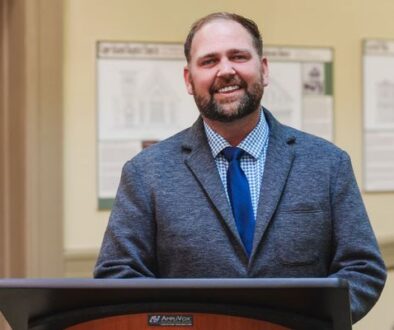Rodin Museum

Good news! You don’t have to go to Paris to see the works of Auguste Rodin. Just take a day to go to Philadelphia, find your way to Benjamin Franklin Parkway and Museum Row, and voila! There it is, an elegant Beaux Arts building set in a park, surrounded by an enthusiastic garden, and yes—presenting the sculptor’s most recognized work, The Thinker, right before you on a pedestal and frame. Many of us know what it is even if we don’t know its creator.
When we are used to seeing mere pictures of art, the experience of standing in front of a real live work strikes an emotional chord: they are alive, in a way, touchable in the imagination if not in reality. We can see folds and wrinkles, cracks, shadings of color and structure. This happens here in an open yet compact space that houses 90 of the 150 Rodin creations assembled by Philadelphia benefactor Julius Mastbaum, who went to Paris seeking art works that he intended to place in the lobbies of his movie theatres around the city, but was inspired to build a museum instead. He assembled the largest collection of Rodin’s works outside Paris. Mastbaum commissioned architect Paul Cret, who was teaching at Penn State, and landscape architect Jacques Gréber, who designed Benjamin Franklin Parkway, to create the building and its surrounding gardens. It opened in 1929.


François Auguste René Rodin (1840–1917) is generally considered the founder of modern sculpture. He was interested in showing character and emotion, with texture that revealed the faults or vagaries of the human body and face.
His earliest work was either rejected or scorned, not only for the textures and unconventional poses, but because galleries and critics accused him of working from photographs. He so resented the accusation that he began sculpting his figures much larger than life, with individual features like hands and especially feet often disproportionate to the rest of the piece.
This information and more comes from the public tour, on the day of my visit led by Gigi, who has 14 years of experience explaining the nuances of the works both here and at the Philadelphia Museum of Art. She showed us details like the tiny pair of scissors dropped and hidden in the folds of flesh of the old woman and the broken nose of a man reputed to be a worker who unexpectedly walked into Rodin’s studio.


The museum consists of a central gallery lit by a skylight roof, two small alcoves, and a library; you can see the collection in about an hour. Do that, but then take the tour, which includes a walk through the garden, where you can take a seat on the wall in front of The Gates of Hell and learn about and maybe identify the tortured bodies representing characters Dante condemned to his Inferno. Rodin spent the last 40 years of his life on this 21-foot-high structure originally intended to be doors for a museum that was never built. Walk around The Thinker – and try, as Gigi suggested, to assume his pose.
The garden on this visit was lush with fall blossoms. Rodin intended several of his works to be outside all the time. So, with Gigi, we saw The Three Shades framed by a window. And my favorite, The Burghers of Calais, depicts five men who offered to sacrifice their own lives to release the city of Calais from siege during the Hundred Years War—true story. The men have ropes around their necks, ready for execution, their faces and bodies showing fear, and even some disbelief: “How did I get myself into this!” quotes Gigi.


And speaking of the garden: throughout the summer the museum hosts Friday night Garden Bar, with “summer cocktails and tasty small plates.” It’s family- and pet-friendly, with music, beverages, and tours. Alas, the parties conclude in August, but what a good excuse to plan another trip.
Visit the museum before January because it will close until February 20 for routine maintenance, and before the current theme, Hands, ends.
A caution: parking is a challenge (it is Philadelphia). Surrounding streets have metered parking, but you need to understand how to pay for it. I did not and I have the ticket to prove it. There is also parking at the Philadelphia Museum of Art, a few blocks away. The museum does not have a café, but across the street is a Whole Foods market.


The Rodin Museum is open Friday through Monday, from 10am to 5pm. The public tour, included in the admission, begins at 1pm. Admission price is open to your discretion. There is a small, intriguing gift shop at the entry. A guard will scan you, so carry in only necessities. Photographs are permitted, but no flash.



